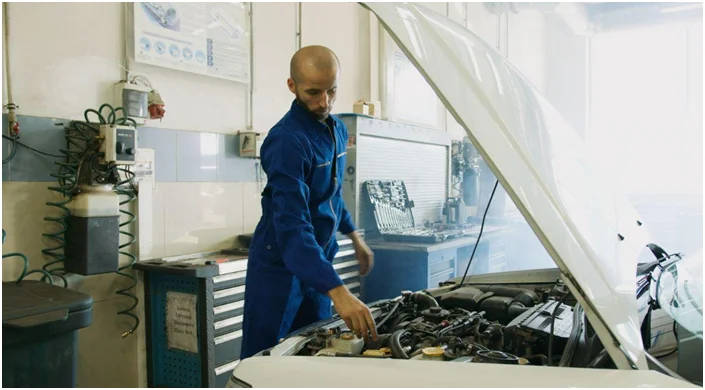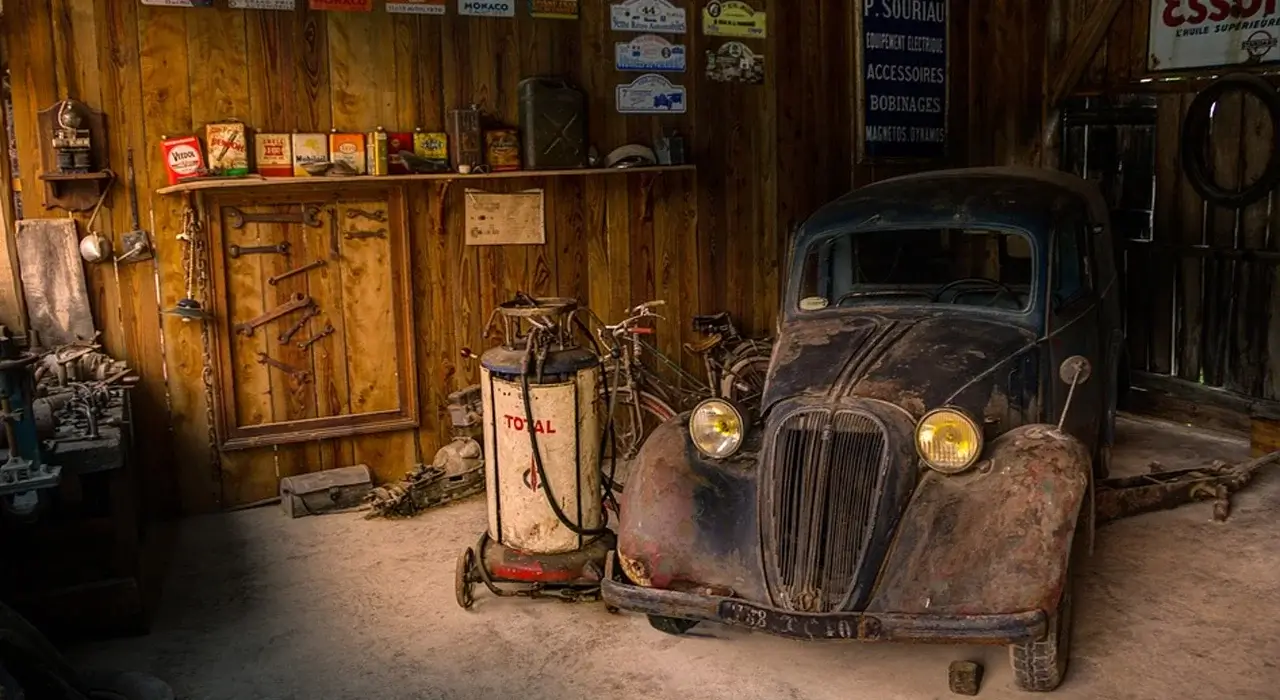There are several ways to maintain the health of your car. One of them is to check your brake pads and shocks regularly. Another one is to change the transmission fluid. You can also wash your vehicle regularly. Let us explore the five ways to maintain the health of your car.
We begin the article by discussing why you need car maintenance to preserve its health before delving into the various techniques.
What is the Importance of Vehicle Maintenance?
Regular automobile maintenance is essential if you want to maintain it in tip-top condition. It could help you save money, reduce accidents, and make your car more fuel efficient. In addition to that, it may lengthen the life of your vehicle. In addition to this, you will get a greater return on your investment. Let us see why vehicle maintenance is crucial.
To Preserve the Functional Components – Checking your vehicle’s oil, tires, and other fluids is part of the maintenance process. In addition, you need to examine the windshield to see if there are any cracks in it. Furthermore, check the belts and the brakes. The owner’s handbook with your car should include all of these things.
It does not matter what kind of car you drive; it is vital to keep up with the scheduled maintenance for your automobile. If you maintain your vehicle following the timetable recommended by the manufacturer, you will avoid having to pay for costly repairs in the future.

Crucial for Changing Seasons – Your automobile will remain in the best condition possible during the winter if you keep up with its routine maintenance. Because of the unpredictable weather and road conditions at this time of year, it is essential to take additional safety measures. Check for leaks, corrosion, and cracks to keep your car in the best shape possible. If you live in an area with typical extreme temperatures, you may want to change your coolant and antifreeze regularly. You may take your vehicle to an auto repair shop every six months.
Suggestion: The Best Way To Remove Rust Stains From White Car Paint
Minimize Potential Issues – Vehicles that are not properly maintained are more likely to have various issues, such as the engine stalling, the brakes failing, and the steering system breaking down. These problems might put you and your passengers in a precarious position if they continue. They may also be rather expensive to purchase.
Safety and Expenses – Keeping yourself safe behind the wheel is essential whenever you are behind the wheel, whether you are driving on the highway, going on a road trip, or commuting to work. If you take care of the little problems now, before they become major problems later on, you can prevent expensive repairs.
For Insurance – In addition, it is recommended that you track the miles on your car as soon as possible. You will have higher fuel economy and a reduced insurance rate if you follow the maintenance plan that the manufacturer provides for your vehicle.
Reduces Downtime – If you follow up with the maintenance plan for your vehicle, you will be able to head off any major problems that may otherwise prevent it from starting. If you have a terrible run of luck and end up having to contend with a significant problem with your vehicle’s maintenance, you will be unable to use your car for many days or weeks. This situation makes doing anything uncomfortable and drains your time, which you might invest in other tasks. This situation is far more concerning for car owners who rely on automobiles for work and commuting.
1. Wash Your Car Regularly
It’s essential to wash your car regularly to maintain the health of your vehicle. Washing your car helps remove dirt, dust, pollen, and other contaminants. Cleaning your car can also extend the life of your vehicle. Keeping the automobile clean can help prevent rust, premature deterioration, and airborne bacteria from harming you and your passengers.

Car owners should clean their vehicles at least once every two weeks. This amount is the recommended frequency by manufacturers and dealers. However, some situations require more frequent cleanings. Those living in cold climates or areas with high pollution may need to wash their cars more frequently.
Washing your car can prevent damage to your car’s paint and interior. For instance, a corrosive coating such as salt or bird droppings can eat through your car’s clear coat. Similarly, sand and stone chips can scratch your car’s paint.
2. Change the Transmission Fluid Filter
It is essential to change the transmission fluid filter from time to time to maintain the health of your vehicle. This activity will keep your transmission running in top shape and keep you from paying a hefty repair bill in the future.
When changing your transmission fluid, follow the instructions outlined in your owner’s manual. These instructions will help you understand the importance of this procedure.
Popular For You: 5 Front And Rear Dash Camera With Night Vision That You Should Consider
First, you should make sure your engine is off. Then, pull the dipstick to check the fluid level. If the transmission fluid level is below the recommended mark, it is advisable to contact a technician.
Depending on your mileage and type of vehicle, you should change your transmission fluid at least once a year or every 30,000 miles. Changing your transmission fluid can extend its life by removing the accumulated dirt and debris that can cause leaks.
3. Vehicle Inspections
Frequent vehicle inspections can ensure that your automobile is in safe working condition. Autoflow can revolutionize the way technicians work by simplifying the vehicle inspection process and streamlining the presentation of diagnostic findings with an intuitive and sleek interface. Another Automated vehicle inspections are ideal for you if you want to preserve the health of your car and improve its longevity. You can quickly find a reliable body shop online that will conduct a thorough inspection of your vehicle.
Companies like Inspektlabs leverage new-age technologies like AI, ML, and computer vision to facilitate automated vehicle inspection. These inspections are far superior compared to traditional human assessments.

4. Check Shocks And Struts
Shocks and struts are vital components of the vehicle suspension system. They stabilize your car and ensure that your tires remain in contact with the pavement. Without these parts, your vehicle will bounce and not perform to its full potential.
Both shocks and struts wear out over time. If you notice that your car has a bouncy or bumpy ride, you may be able to determine whether or not you need to replace these crucial suspension components.
Over time, these suspension components can degrade and lead to unsafe driving conditions. Whether you’re an everyday driver or a professional mechanic, knowing when to inspect your struts and shocks can help you avoid an accident.
Dont Miss To Checkout: All-New Toyota 4Runner Redesign Review 2023: Price, Specs, and Trims
You should consider replacing your struts and shocks if you notice any faults. Struts and shocks should undergo inspection at least every 20,000 miles.
5. Inspect Brake Pads
Performing regular brake inspections is vital to the health of your car. Not only does it keep you safe while driving, but it also prevents you from damaging the rotors and pads.
The first step in checking the braking system is to park your car on a flat surface. This inspection ensures that you will get accurate fluid readings. A good rule is to check the brakes at least every 50,000 miles.
You will check each wheel’s inner and outer brake pads during your inspection. Some cars may have a dashboard indicator light to alert you when the brake pads are wearing out. You can also use a Vernier caliper to measure the thickness of the brake pads.

Ideally, the pads must be at least 1/4 inch thick. If they are any thinner, they are ineffective and can compromise the vehicle’s safety. Also, they can cause the car to veer to the side when braking.
Conclusion
While the most effective means of maintaining your vehicle is to get it serviced by an expert, there are other things you can do on your own to keep it running at its best. Other items to watch for include your vehicle’s battery and turn signal.
You might ask your local automotive shop if you’re unsure of these items. Ensuring that your vehicle is in fit working condition is always a top priority for any car owner. Preserving your vehicle will allow you to retain its resale value and reduce your burden with repairs and maintenance. Generally, the best way to do this is to conduct a thorough car inspection. If that is not possible, you can perform a basic check and clean your vehicle privately.
Discover more from Locar Deals
Subscribe to get the latest posts to your email.






